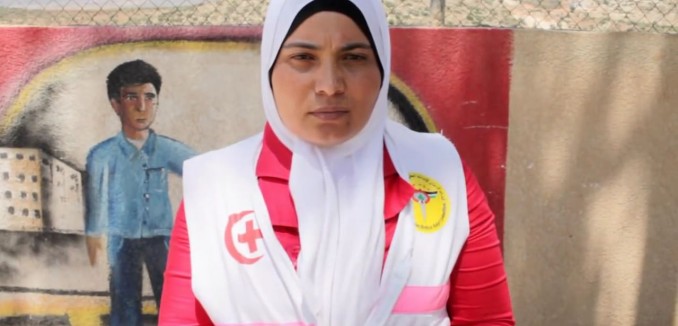The report by the UN Human Rights Council (UNHRC) on the 2014 Gaza conflict, released earlier this week, is substantiated in large part by the allegations of political advocacy NGOs (non-governmental organizations). One such group, Physicians for Human Rights-Israel (PHR-I), was cited 16 times.
PHR-I is an Israeli organization that has a distinctly political agenda: to “put an end” to “Israel’s prolonged occupation over Palestinian territory,” which it views as “the basis of human rights violations.” While PHR-I runs medical clinics in impoverished areas of the West Bank, its most visible activities are frequent, and baseless, allegations that Israel violates international law and commits war crimes.
The references to PHR-I in the UN report are from a January 2015 publication, purporting to provide the conclusions of a “fact-finding mission” that travelled to Gaza following the conflict. A cursory survey of the mission’s members quickly debunks their claim that this was an “independent medical fact-finding mission.” Amongst the participants of the mission are staunch supporters of anti-Israel boycotts (BDS) and promoters of apartheid rhetoric. One member publicly referred to Israel’s “devilishly sophisticated and flourishing industry of death.”
The conclusions drawn by PHR-I and repeated by the UN Commission of Inquiry are similarly biased. As shown in NGO Monitor’s analysis, PHR-I’s so-called investigation was one-sided, methodologically flawed, and largely based on hearsay. More resembling a kangaroo court than an independent body, PHR-I found Israel guilty from the beginning, then twisted the available evidence to “convict” it of indiscriminately bombing civilians and purposely targeting medical personnel. The repetition of these unreliable allegations severely impinges on the integrity of the UN’s findings.
An examination of the methodology employed by PHR-I shows how the NGO makes claims that are clearly devoid of empirical support. Much of the evidence reviewed by the fact-finding mission was provided by Hamas-controlled ministries and institutions with a clear political agenda, compromising the results. These include files, photographs, tissue samples, and x-rays. Evidence regarding causes of death was also lacking as no autopsies were performed.
Furthermore, despite asserting that “the attacks [by Israel] were characterized by heavy and unpredictable bombardments,” the fact-finding mission later admitted that “because of a lack of military expertise, the [mission] was not in a position to provide a comprehensive analysis of the types of weapons used by Israeli forces.” It is therefore impossible to conclusively attribute to Israel injuries and damage that occurred in unclear circumstances, some of which was caused by deliberate or accidental attacks by Hamas.
The UNHRC report, however, appears in at least three instances to have relied on PHR-I’s admittedly flawed data in order to make conclusions on the specific types of munitions used. Numerous other NGOs were likewise misused by the Commission.
The fact-finding mission relied heavily on subjective and emotive interviews in preparing their evaluation. These are no substitute for verifiable forensic evidence. Casting doubt over the veracity of interviewee responses is the distinct possibility that some respondents may have been coerced by Hamas or feared violent repercussions if they did not toe the line set by the terrorist group. Hamas executions of political opponents and suspected collaborators during the 2014 conflict underscore the nature of this threat. It is also noteworthy that PHR-I’s members were accompanied by fieldworkers from other political NGOs, including Al-Mezan, Palestinian Center for Human Rights, and Gaza Community Mental Health Program, possibly affecting the accuracy of the interviews. These individual organizations are also extensively cited in the UNHRC report.
Further limitations abound. The PHR-I investigators “did not have access to [relevant] UNRWA facilities…They could therefore investigate neither the public health impact of displacement in these facilities, nor the allegations made by the Israeli government regarding the abuse of such facilities for military purposes.” Similarly, they had “no access to evidence regarding the conduct of Palestinian armed combatants within Gaza.”
No honest discussion of Israel’s military actions is possible absent information about Palestinian terrorist organizations and their abuse of medical infrastructure. The UNHRC report mentions Israeli claims that Hamas used hospitals to store weapons and launch attacks, but either rejects them based on anonymous testimony or hides behind the excuse of being unable to “independently verify these specific allegations.” This failure to consider the ample evidence that corroborates these war crimes is consistent with the PHR-I’s whitewashing of these events.
It appears that the essence of the UNHRC account and their decision to use PHR-I’s report as a valid source of information was captured perfectly by the late U.S. Congressman Earl Landgrebe, who once said: “Don’t confuse me with the facts, I’ve got a closed mind.” Evidence that does not fit the narrative of NGOs like PHR-I can be dismissed, lest Israel be exonerated and the war crimes of Hamas revealed. The fact that the UN “Commission of Inquiry” found this organization to be a reliable source speaks volumes about the abject failure of that body to accurately report on the 2014 Gaza conflict.
Yona Schiffmiller is a David Littman fellow and researcher at NGO Monitor, a Jerusalem-based research institute.
[Photo: PHRI / YouTube]




